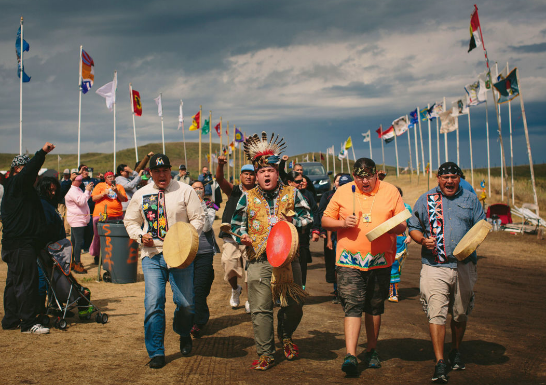Dakota Access Pipeline Teach In: Water is Life
March 25, 2017
Water is the basis of all life as we know it. The North Dakota Access Pipeline was one of the biggest controversies in the year of 2016. Thousands of people from all over the world went and stood on Standing Rock to defend one of the biggest indigenous reservations in the world. The issue reached worldwide awareness when the pipeline was being started, with millions of people checking in on Facebook to show their support.
In recent months, the commotion has died down and construction has been moving forward at the Standing Rock Reservation. This is due to an executive order signed by President Trump to permit construction and operation of the pipeline. There are still people out there protecting the reservation but support has significantly died down since Trump’s directive. Police still survey the area and anyone caught there now risks facing serious charges for trying to protect the land.
Katheryn Horne, UW-L junior stated, “When we went to Standing Rock there were police officers putting up razor wire near the river. They wouldn’t even look at us or acknowledge our existence. There were helicopters and drones overhead 24/7. They jammed our phones. We even helped create shields for the veterans so when they were doused a firehose they wouldn’t fall down.”
Horne elaborated, “It’s our generation that needs to take the stand. It may not be the easiest issue to connect to but if the pipeline bursts it affects the drinking water for millions of people and animals. We met people from all over the world who came and stood with us in support.”
Jeremy Arney, Political Science and Public Administration professor stated, “This would not have become an international issue without social media. It’s our duty to keep the conversation alive since the mainstream media won’t cover this anymore. We need more people to stop standing by like nothing happened.”
The North Dakota Access Pipeline, scheduled to be completed, covers 1,172 miles from North Dakota to Illinois. It crosses the Missouri and Mississippi rivers, two of the largest in the country. If there are any leaks or problems with this pipeline millions of homes across the Midwest region could be affected. Various methods of fracking and other environmentally harmful methods are also being used to build this pipeline. The harm to the environment will only increase over time unless something can stop the will of the government.
“This affects non-native people too. If that pipeline bursts, it could affect millions of people. Unfortunately, I feel that may be the only way for people to wake up about this issue. By then it will be too late,” Arney said.






